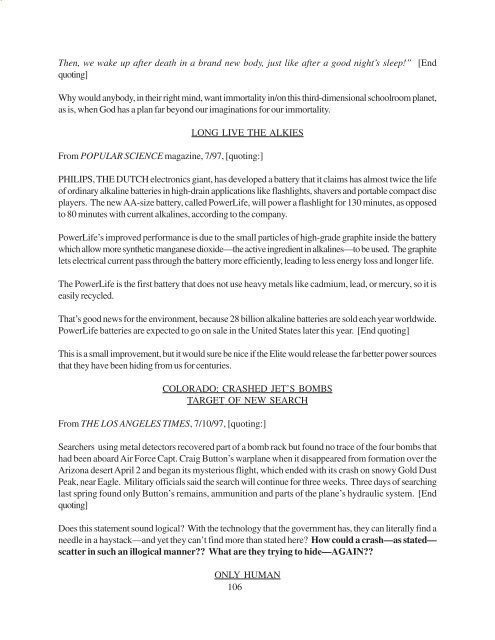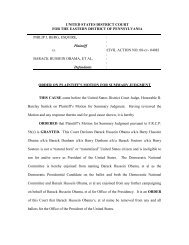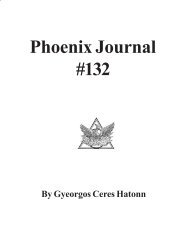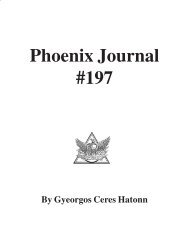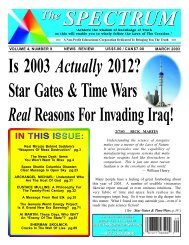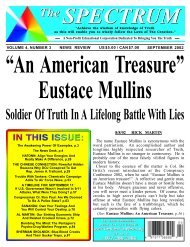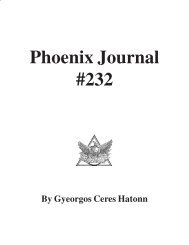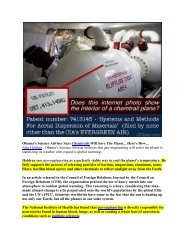Phoenix Journal 208 - Four Winds 10
Phoenix Journal 208 - Four Winds 10
Phoenix Journal 208 - Four Winds 10
You also want an ePaper? Increase the reach of your titles
YUMPU automatically turns print PDFs into web optimized ePapers that Google loves.
Then, we wake up after death in a brand new body, just like after a good night’s sleep!” [End<br />
quoting]<br />
Why would anybody, in their right mind, want immortality in/on this third-dimensional schoolroom planet,<br />
as is, when God has a plan far beyond our imaginations for our immortality.<br />
LONG LIVE THE ALKIES<br />
From POPULAR SCIENCE magazine, 7/97, [quoting:]<br />
PHILIPS, THE DUTCH electronics giant, has developed a battery that it claims has almost twice the life<br />
of ordinary alkaline batteries in high-drain applications like flashlights, shavers and portable compact disc<br />
players. The new AA-size battery, called PowerLife, will power a flashlight for 130 minutes, as opposed<br />
to 80 minutes with current alkalines, according to the company.<br />
PowerLife’s improved performance is due to the small particles of high-grade graphite inside the battery<br />
which allow more synthetic manganese dioxide—the active ingredient in alkalines—to be used. The graphite<br />
lets electrical current pass through the battery more efficiently, leading to less energy loss and longer life.<br />
The PowerLife is the first battery that does not use heavy metals like cadmium, lead, or mercury, so it is<br />
easily recycled.<br />
That’s good news for the environment, because 28 billion alkaline batteries are sold each year worldwide.<br />
PowerLife batteries are expected to go on sale in the United States later this year. [End quoting]<br />
This is a small improvement, but it would sure be nice if the Elite would release the far better power sources<br />
that they have been hiding from us for centuries.<br />
COLORADO: CRASHED JET’S BOMBS<br />
TARGET OF NEW SEARCH<br />
From THE LOS ANGELES TIMES, 7/<strong>10</strong>/97, [quoting:]<br />
Searchers using metal detectors recovered part of a bomb rack but found no trace of the four bombs that<br />
had been aboard Air Force Capt. Craig Button’s warplane when it disappeared from formation over the<br />
Arizona desert April 2 and began its mysterious flight, which ended with its crash on snowy Gold Dust<br />
Peak, near Eagle. Military officials said the search will continue for three weeks. Three days of searching<br />
last spring found only Button’s remains, ammunition and parts of the plane’s hydraulic system. [End<br />
quoting]<br />
Does this statement sound logical? With the technology that the government has, they can literally find a<br />
needle in a haystack—and yet they can’t find more than stated here? How could a crash—as stated—<br />
scatter in such an illogical manner?? What are they trying to hide—AGAIN??<br />
ONLY HUMAN<br />
<strong>10</strong>6


